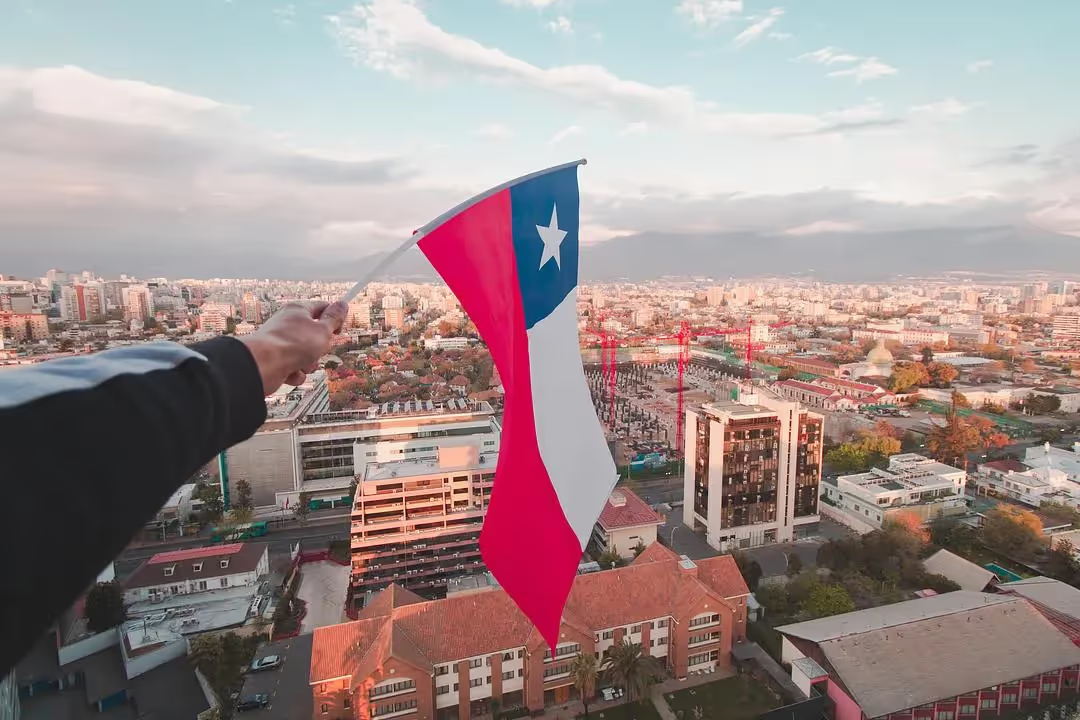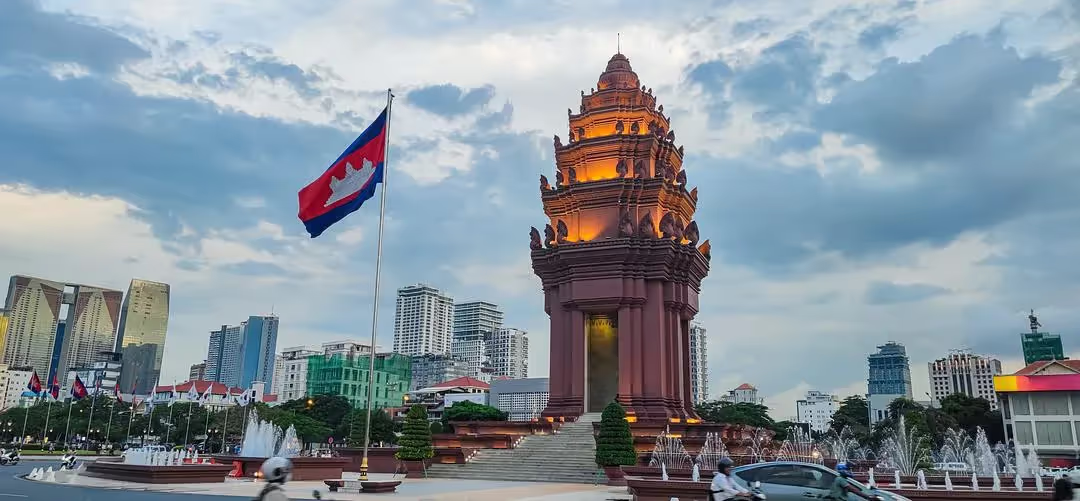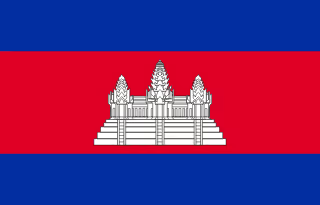

Employer of Record Guide in Philippines
Navigating the hiring landscape in the Philippines can be complex, but with the right insights, you can streamline your process. Discover how to compliantly hire top talent and manage your workforce effectively in one of Southeast Asia's most dynamic markets.
Capital City
Currency
Languages
Population size
Services available in this country:

Key stats and facts
The Philippines offers a skilled, English-speaking workforce across key sectors like ICT, customer service, and manufacturing. With major economic hubs from Manila to Cebu and competitive operating costs, it's become a strategic destination for global teams looking to scale.
Major economic hubs
Skills in demand
Currency
Language
GDP per Capita
Standard Tax Rate
Your EOR guide in Philippines
Understanding Philippine employment law is crucial for compliant hiring and payroll management. This comprehensive guide covers everything from regional minimum wages and mandatory contributions to leave policies and onboarding requirements.
Minimum Wage
The Philippines operates under a regional minimum wage system, with rates varying significantly across different regions and sectors. The National Wages and Productivity Commission (NWPC) oversees wage setting through Regional Tripartite Wages and Productivity Boards.
| Region | Daily Minimum Wage (PHP) | Effective Date |
|---|---|---|
| National Capital Region (NCR) | ₱610 | July 2024 |
| Region I (Ilocos) | ₱380-420 | Varies by province |
| Region III (Central Luzon) | ₱420-470 | Varies by province |
| Region IV-A (CALABARZON) | ₱470-520 | Varies by province |
| Region VII (Central Visayas) | ₱380-450 | Varies by province |
| Region XI (Davao) | ₱420-460 | Varies by province |
Note: Minimum wage rates are subject to regular adjustments by Regional Tripartite Wages and Productivity Boards. Agricultural and non-agricultural sectors may have different rates within the same region.
Payroll Cycle
- Bi-monthly: Most common, with payments on the 15th and 30th/31st of each month
- Monthly: Allowed but less common
- Weekly: Permitted for certain industries
Note: The Labour Code requires payment at least twice monthly, with intervals not exceeding 16 days.
Individual Income Tax
The Philippines uses a progressive tax system under the TRAIN Law (Tax Reform for Acceleration and Inclusion):
| Annual Income (PHP) | Tax Rate |
|---|---|
| Up to ₱250,000 | 0% |
| ₱250,001 to ₱400,000 | 20% |
| ₱400,001 to ₱800,000 | 25% |
| ₱800,001 to ₱2,000,000 | 30% |
| ₱2,000,001 to ₱8,000,000 | 32% |
| Over ₱8,000,000 | 35% |
Tax Residency Criteria
Individuals are considered Philippine tax residents if they:
- Are Philippine citizens, regardless of residence
- Are foreign nationals residing in the Philippines for more than 180 days in a calendar year
- Have established domicile in the Philippines
Employer Payroll Contributions
Philippine employers must contribute to several mandatory social security programs:
| Contribution Type | Employer Rate | Employee Rate | Total Rate |
|---|---|---|---|
| Social Security System (SSS) | 8.5% | 4.5% | 13% |
| Philippine Health Insurance (PhilHealth) | 2.5% | 2.5% | 5% |
| Home Development Mutual Fund (Pag-IBIG) | 2% | 1-2% | 3-4% |
| Total Employer Contribution | ~13% | ~8% | ~21% |
Note: Contribution rates are applied to specific salary caps. SSS contributions are capped at ₱25,000 monthly salary, PhilHealth at ₱80,000, and Pag-IBIG at ₱5,000.
Working Hours
The standard working schedule in the Philippines is 8 hours per day, 48 hours per week, typically Monday through Saturday (with half-day Saturday) or Monday through Friday with longer daily hours.
Flexible Work Arrangements:
- Compressed workweek (4-day, 10-hour schedule)
- Flexible time (flexi-time) arrangements
- Remote work options (regulated under the Telecommuting Act)
Overtime Pay
- Regular Overtime: 125% of regular hourly rate for work beyond 8 hours on regular days
- Holiday Overtime: 130% of regular hourly rate for work on regular holidays
- Rest Day Overtime: 130% of regular hourly rate for work on scheduled rest days
- Night Shift Differential: Additional 10% for work between 10 PM and 6 AM
Bonus Payments
Mandatory Bonuses:
- 13th Month Pay: Equivalent to 1/12 of total basic salary earned during the year, paid before December 24
- Service Incentive Leave: Monetised if not used (5 days annually)
Common Discretionary Bonuses:
- Performance bonuses
- Christmas bonuses (beyond 13th month pay)
- Mid-year bonuses
Full-Time vs. Part-Time
- Full-time: Employees working 8 hours per day, 48 hours per week
- Part-time: Employees working less than the normal hours of a comparable full-time employee
- Casual: Employees working less than 6 months in a year
Vacation Leave
- Service Incentive Leave: 5 days annually after 1 year of service (combines vacation and sick leave)
- Commutable: Can be converted to cash if not used
- Accrual: Earned proportionally throughout the year
Sick Leave
- Included in Service Incentive Leave: 5 days total (combined with vacation)
- Medical Certificate: Required for absences exceeding 3 consecutive days
- Maternity-Related: Separate provisions under the Expanded Maternity Leave Act
Maternity Leave
- Duration: 105 days (15 weeks) for normal delivery, 120 days for caesarean section
- Eligibility: Female employees who have paid at least 3 monthly contributions to SSS
- Payment: Paid by SSS, not the employer
- Job Security: Guaranteed reinstatement to the same position
Paternity Leave
- Duration: 7 days for married male employees
- Eligibility: For the first 4 deliveries of the legitimate spouse
- Payment: Full pay provided by the employer
- Timing: Can be taken within the first 60 days from delivery
Parental Leave
- Solo Parent Leave: 7 days annually for solo parents
- Adoption Leave: Same as maternity leave for adoptive mothers
- Expanded Benefits: Additional support for parents with special needs children
Bereavement Leave
- Duration: 3 days for death of immediate family members
- Coverage: Spouse, children, parents, siblings
- Payment: Typically unpaid unless specified in company policy
Special Leave Benefits for Women
- Gynecological Disorders: 2 months leave with full pay
- Pregnancy-Related: Additional leave for pregnancy complications
- Violence Against Women: 10-day leave for women victims of violence
Summary
| Leave Type | Duration | Paid? | Funding |
|---|---|---|---|
| Service Incentive Leave | 5 days/year | Yes | Employer |
| Maternity Leave | 105-120 days | Yes | Government (SSS) |
| Paternity Leave | 7 days | Yes | Employer |
| Solo Parent Leave | 7 days/year | Yes | Employer |
| Bereavement Leave | 3 days | Varies | Employer |
| Special Leave (Women) | Up to 2 months | Yes | SSS/Employer |
Termination Types
Termination for Just Cause:
- Serious misconduct, wilful disobedience, gross negligence
- Fraud, breach of trust, commission of crime
- No notice or separation pay required
Termination for Authorised Cause:
- Redundancy, retrenchment, closure of business
- Disease not curable within 6 months
- Requires 30-day notice and separation pay
Termination Without Cause:
- Not permitted under Philippine law
- Must have valid just cause or authorised cause
Notice Period Requirements
| Termination Type | Notice Period | Separation Pay |
|---|---|---|
| Just Cause | None | None |
| Authorised Cause | 30 days | Yes |
| End of Contract | None (if fixed-term) | None |
| Probationary | None | None |
Separation Pay
Authorised Cause Termination:
- Redundancy/Retrenchment: 1 month pay or ½ month pay per year of service (whichever is higher)
- Closure: 1 month pay or ½ month pay per year of service
- Disease: 1 month pay or ½ month pay per year of service
Probationary Employment
- Duration: Maximum 6 months
- Standards: Must be made known to employee at time of engagement
- Termination: Can be terminated for failure to qualify, with or without notice
Final Pay Requirements
Employers must release final pay within 30 days of termination, including:
- Unpaid salary and overtime
- Unused service incentive leave
- 13th month pay (pro-rated)
- Separation pay (if applicable)
Security of Tenure
The Philippine Constitution guarantees security of tenure, meaning employees cannot be dismissed except for just cause or when authorised by law. This provides strong protection against arbitrary termination.
National Holidays
Regular Holidays (with pay even if not worked):
| Holiday | Date |
|---|---|
| New Year's Day | January 1 |
| Maundy Thursday | March/April (varies) |
| Good Friday | March/April (varies) |
| Araw ng Kagitingan (Day of Valour) | April 9 |
| Labour Day | May 1 |
| Independence Day | June 12 |
| National Heroes Day | Last Monday of August |
| Bonifacio Day | November 30 |
| Christmas Day | December 25 |
| Rizal Day | December 30 |
Special Non-Working Holidays (no pay unless worked):
| Holiday | Date |
|---|---|
| Chinese New Year | January/February (varies) |
| EDSA People Power Revolution | February 25 |
| Black Saturday | March/April (varies) |
| Ninoy Aquino Day | August 21 |
| All Saints' Day | November 1 |
| Christmas Eve | December 24 |
| New Year's Eve | December 31 |
Holiday Pay Rules
Regular Holidays:
- Not Working: 100% of daily wage
- Working: 200% of daily wage (double pay)
Special Non-Working Holidays:
- Not Working: No pay (unless company policy provides)
- Working: 130% of daily wage
Local Holidays
Each local government unit may declare additional holidays specific to their locality, which may affect work schedules and pay requirements.
Required Documents for Employment
Employee Documentation:
- Employment Contract: Must specify terms, conditions, and job description
- BIR Form 2316: Certificate of compensation payment/tax withheld
- SSS/PhilHealth/Pag-IBIG Numbers: For social security registration
- TIN (Tax Identification Number): Required for all employees
- Medical Certificate: For certain positions or as required by company policy
Government Compliance:
- Alpha List: Monthly reporting to BIR
- Establishment Registration: With DOLE, SSS, PhilHealth, and Pag-IBIG
- Work Permit: For foreign employees
Foreign Worker Requirements
Work Permit Process:
- Alien Employment Permit (AEP): Required from DOLE
- Special Work Permit: For short-term assignments
- Visa Requirements: Appropriate visa classification (9G, 47A2, etc.)
- Tax Registration: With Bureau of Internal Revenue
Language Requirements
- Filipino and English: Both are official languages
- Contracts: Can be in English, but Filipino translations may be required
- Labour Standards: Must be communicated in a language understood by employees
Background Checks & References
Permitted Checks:
- Criminal background (with employee consent)
- Employment verification
- Educational credentials
- Professional licences (for regulated professions)
Restrictions:
- Must be job-related and proportionate
- Employee consent required
- Compliance with Data Privacy Act
Data Protection & Privacy
Data Privacy Act of 2012:
- Employee consent required for personal data processing
- Appointment of Data Protection Officer (for certain companies)
- Security measures for personal data
- Employee rights to access, correct, and delete personal data
Employment Contract Essentials
Mandatory Inclusions:
- Job title and description
- Salary and benefits
- Working hours and schedule
- Probationary period (if applicable)
- Termination procedures
- Company policies reference
Onboarding Timeline
| Step | Timeline |
|---|---|
| Job offer accepted | Day 0 |
| Document collection | Day 1-3 |
| Government registrations | Day 3-7 |
| Contract signing | Day 5-7 |
| Orientation and training | Day 7-14 |
| Probationary evaluation setup | Day 30 |
What the EOR Handles
Borderless AI manages:
- Employment contracts and compliance
- Payroll processing and tax withholding
- Social security registrations
- Government reporting requirements
- Local labour law compliance
Worker Classification
Employee vs. Independent Contractor:
- Control Test: Level of supervision and control over work
- Economic Reality Test: Financial dependence and investment in business
- Integration Test: Whether work is integral to the business
Risks of Misclassification:
- Back payment of benefits and contributions
- Penalties from government agencies
- Potential regularisation of contractors
Labour Relations & Unions
Right to Organise:
- Employees have constitutional right to form unions
- Collective bargaining is protected
- Strikes and lockouts are regulated
Union Security Arrangements:
- Closed shop, union shop, and maintenance of membership allowed
- Check-off of union dues with employee consent
Cultural Considerations
Workplace Culture:
- Respect for hierarchy: "Po" and "Opo" culture
- Pakikipagkapwa: Shared identity and community spirit
- Work-life balance: Family obligations often take priority
- Religious observances: Predominantly Catholic, with respect for religious holidays
Communication Style:
- Indirect communication to avoid confrontation
- "Hiya" (shame) culture affects feedback delivery
- Relationship-building important for business success
Remote Work Regulations
Telecommuting Act (RA 11165):
- Legal framework for remote work arrangements
- Employee rights and employer obligations defined
- Equipment and connectivity provisions
- Health and safety requirements for home offices
Implementation Requirements:
- Written telecommuting agreement
- Performance monitoring systems
- Regular communication protocols
- Compliance with labour standards even in remote setup
Special Economic Zones
PEZA and Other Economic Zones:
- Special labour rules may apply
- Tax incentives for employers
- Streamlined processes for foreign workers
- Enhanced benefits for employees in certain zones
Note: Companies operating in special economic zones should verify specific requirements and benefits applicable to their location.
Built-in benefits packages for Philippines
When the world is your competition, it pays to incentivize new hires and existing alike. Borderless AI benefits packages typically inlucde:

Medical Insurance

Dental Insurance

Retirement Contribution

Life Insurance

Vision Insurance
Explore other countries

Unlock global hiring potential
Simplify your payroll and hiring processes today.








